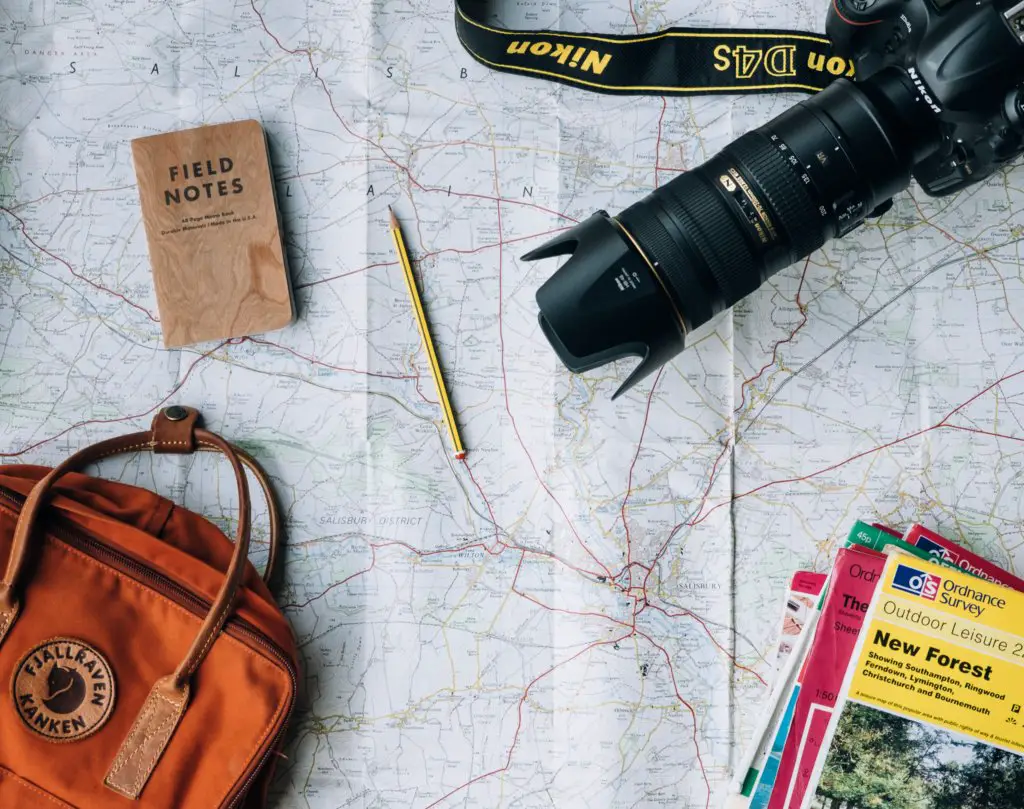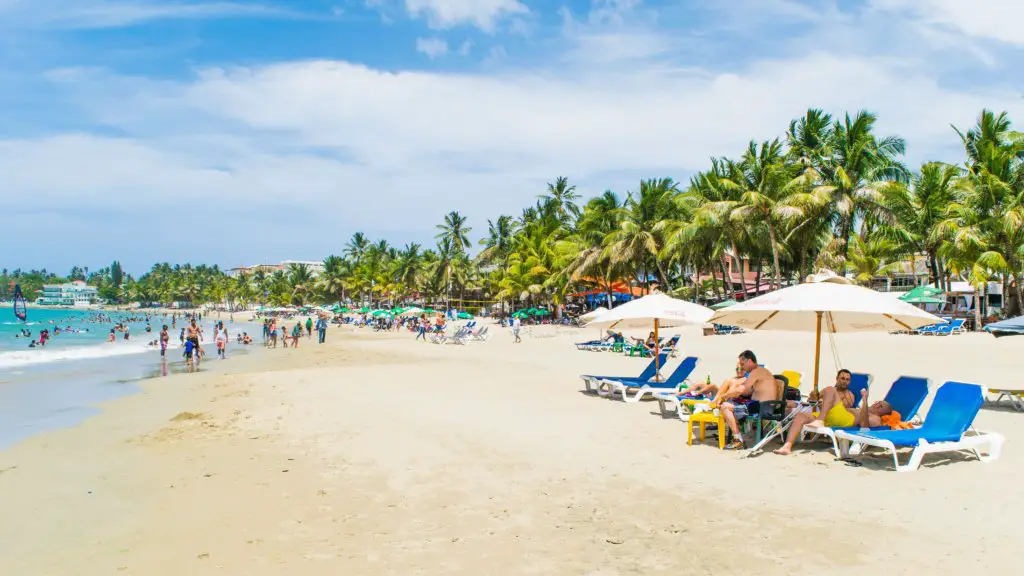By Susan Doktor
Travel enthusiasts cite as many reasons for traveling as there are destinations on earth. Widening their perspective on people. Opening their eyes to mind-blowing sights. Increasing their physical endurance. Even expanding their culinary tastes and talents. Travel is among the most enriching experiences we can give ourselves. And while the cost of travel may sometimes seem prohibitive, you don’t need to be rich to do it.
Financing your wanderlust, like any other goal, is entirely possible. All it takes is inspiration, commitment, and a well-considered strategy. Want to get to work on your roadmap? Let’s take a look at some of the questions you should ask yourself when creating a plan to get from point A to point B. The first steps don’t have a lot to do with money. But we’ll get to that.

What is Point B, Anyway?
It could be a destination and it could be a wish list of things you hope to accomplish when you set off on your journey. Some people have a long-standing desire to visit a particular place: the country your grandma came from and brought to life in fascinating stories, or someplace you read about in a novel or history book. But if you don’t exactly know where you want to go, spend some time asking yourself, “What do I want to make happen when I travel?” Or perhaps, “What do I want to learn from my travel experience?” It may be that you want to brush up on the language you studied in high school or prove to yourself that you can climb a mountain. Or both. A trip to Paris might not satisfy both of your goals but an expedition to Mont Blanc or the Jura mountain range, which straddles France and Switzerland, would fit the bill.

When Was the Last Time You Looked at a World Atlas?
Lots of people would answer, “I can’t remember.” Maybe you don’t have an atlas on your bookshelf. But you can certainly visit a few online and learn about a lot more than geography. Reading a bunch of atlases can help you narrow your destination choices to the ones that connect best with your travel goals. Atlases can give you all kinds of ideas, too. Knowing which countries border other countries can turn the single-destination trip you first envisioned into a more multi-cultural, multi-dimensional adventure. Germany borders nine countries and some are just a quick train ride away from Germany’s major cities.
How Rustic Am I Really?
Let’s say you’re dreaming of soaking up the sun with a pile of books beside you. If you want frozen cocktails with that order, a Caribbean resort in winter or the French Riviera in summer are pretty good choices. But maybe it’s solitude you crave and cracking open your own coconut sounds like heaven to you. Then you might be better served by a trip to Kiribati, an island nation in the central Pacific. You might even catch sight of a Magnificent Frigatebird or two. Talk about photo ops! The more rustic your vacation, the less it might cost you. And that can mean the difference between go and no-go depending on your budget.

How Much Difference is Too Much Difference?
A change of scenery can come with a lot of other changes, too. Depending on your innate confidence, how much travel experience you’ve had, and how you react to surprises, you may want to choose a destination that’s more or less distinctive from the place you call home. Americans are fortunate in so many ways. And when it comes to travel, we can visit pretty far and wide and still find plenty of people who speak English. But ask yourself how comfortable you’d be traveling where English is rarely spoken. We take communication for granted—until we can’t communicate.
And language barriers aren’t the only thing to consider. Americans enjoy many freedoms that other countries don’t. Would it make you uncomfortable to travel to a country with a strong military presence? Guns make many people uneasy and, in some countries, there are armed soldiers on many street corners. Do you want to be able to choose what you wear each morning when you wake up? Proper dress, particularly for women, is defined very differently in some countries. While some countries are banning niqabs, others expect women to wear them. Women who don’t may even be subject to harassment. And not to be indelicate, but some of the greatest sites to behold don’t come with the greatest bathroom facilities, either.
Funding All That Fun
Once you’ve decided on a destination, it’s time to consider how much your adventure is going to cost you and where you’ll find the money to turn your vision into plane tickets, hotel reservations, meals, and more.
Unless you’ve already banked all you need to take off and see the world, the first and most obvious step toward reaching your goal is saving money. Many dedicated travelers have a special travel fund they contribute to regularly and don’t touch for any other reason than to pay for travel expenses. Even if you’re living pretty close to the bone, there are simple ways to save that won’t curtail your lifestyle too tragically, at least once you grow accustomed to them. Here’s a short list of our ideas, but you’re creative. We’re sure you will come up with more.
- Walk more. Drive less. That’s one way to prepare for a trek in the Rockies or the Himalayas.
- Make your own coffee. Those double-shot lattes drain funds as fast as you can drink them.
- Brown bag it. Try to cut restaurant lunches down to once or twice a week.
- Visit the library. We know, it’s so simple to download the latest best-sellers onto your Kindle. But your local library will let you read them for free.
- Become a thrift store shopper. You’ll be amazed at what people give away. And you can support some good causes by patronizing stores that donate profits to local charities.
- Sell some stuff. Turn your clutter into cash. Your closets and cupboards will be so much more inviting and easier to navigate.
If You Have to Borrow, Do It the Smart Way
Actually, even if you don’t have to borrow, you can enhance your upcomig travel experience—and even begin funding your next one by using a travel credit card to pay for some of your expenses. The best travel credit cards can help reduce your travel expenses, make layovers more luxurious, and provide perks you can enjoy both during and after your trip. The secret is to choose and use your card the right way.
Once you start shopping for a travel credit card, you may think we’re crazy for even bringing up the subject. You’re not unduly extravagant. You shop around for the best price at the pump—or for a pair of pumps, for that matter. And chances are, the credit card you already carry comes with a much lower interest rate than most specialty travel cards. APRs in the neighborhood of 25% are not uncommon in the travel credit card category.
The best way to make a travel credit card worth the effort is to never put more on it than you know you’ll be able to pay off in a single billing cycle. We’re not saying don’t put a lot or large purchases on it. The more you put on it, the more rewards you’ll earn. We’re saying use it for everyday budgeted expenses you’d normally pay cash for. Hang on to the cash for a few weeks, then, when your statement arrives, use it to pay off your travel credit card balance. Trust us, you don’t want to let a big travel credit card balance hang around. The interest just might ground you.
It’s often a good idea to use your travel credit card for travel-related expenses. Some cards offer higher rewards when you spend in travel-related categories like airfare and hotel accommodations. But be careful. Some cards are affiliated with specific airlines and hotel chains. The best airfare you find might not be with your card’s partner companies. The rewards you earn by using your card’s “preferred” airline may not offset the money you’d save by booking the lowest-cost flight.

Practice a Little Credit Card Jujitsu
Let’s say you can’t afford to pay off the cost of your tickets in one billing cycle but you still want to earn the perks your travel credit card offers. This is where planning ahead can really be an advantage. First, apply for your travel credit card well before you want to begin paying for travel expenses. Then, right before you actually use it, apply for a card that offers a 0% introductory rate on balance transfers. Some credit card offers come with no balance transfer fees and those are the best deals. One caveat: it’s best to space out your two credit card applications by at least six months (a year is preferable) to prevent any negative impact on your credit score.
When it comes time to purchase your ticket to Tahiti, use your travel credit card. Scoop up the rewards. Then immediately transfer the balance on your high-interest card to your no-interest card. You’ll have more time to pay off your balance and you may be able to do so interest-free.
Compare Rewards, Bonus Offers, and Annual Fees
Prepare for a head-spinning experience. Travel credit card rewards come in a dizzying array of colors. Companies compete for your business by trying to differentiate themselves through their reward programs and bonus offers. Sorting them out takes some time. Once you have a feel for what rewards are out there, ask yourself which rewards would be most meaningful to you. If you’re new to travel, receiving frequent flyer miles for card purchases might be appealing. If you have a million miles in the bank, not so much. In that case, cards that reward you in cashback or services may make more sense. Airports are dreary places and if you’re expecting a long layover, you may enjoy a little respite. Some cards give you access to comfy airline lounges to make flying a little more fun. There are many reward options out there. Weigh them all before you make a travel credit card decision.
Some cards offer customers a sign-on bonus. Many bonuses come in the form of points that you can redeem for services or cash back. Find the best bonus you can, but be aware that sometimes bonuses are tied to high, time-limited minimum purchases. Before you let a bonus sway you, be sure you understand the redemption rules that come with it.
As you shop around for a travel credit card, you’ll notice that some charge annual fees and some don’t. Why would you want to pay an annual fee? Not to sound like a skipping CD, but, again, it’s the rewards. Some credit companies that charge annual fees include companion tickets among their rewards. Doesn’t that sound fun? How about first-class upgrades or in-flight movies and cocktails? Ask yourself whether the rewards you’ll receive for paying an annual fee are equal in value to the fee itself. Value, of course, is both practical and personal. You may have to do a little soul-searching—and get out your calculator—but that’s smart shopping for you.
Author Bio
Susan Doktor is a journalist and business strategist who counts the time she has spent in far-flung places for double. She guest- and ghost-blogs internationally on a wide range of topics, including finance, technology, travel, food, and wine.